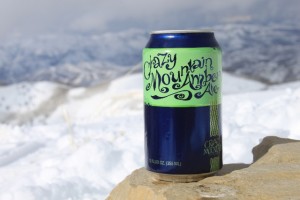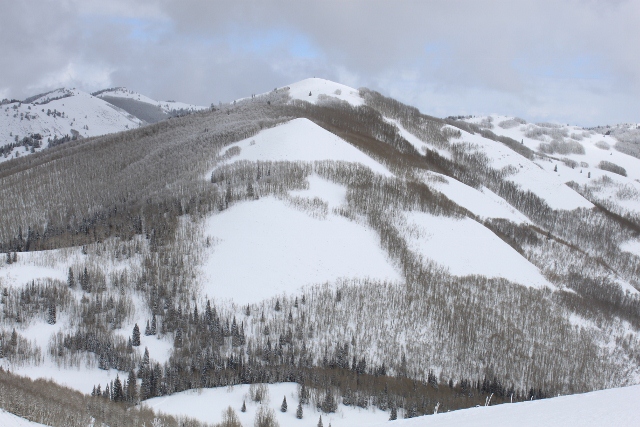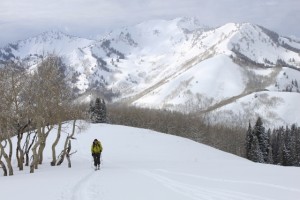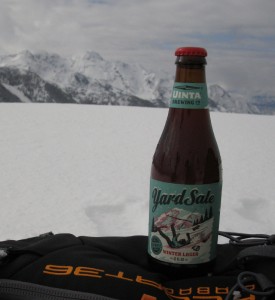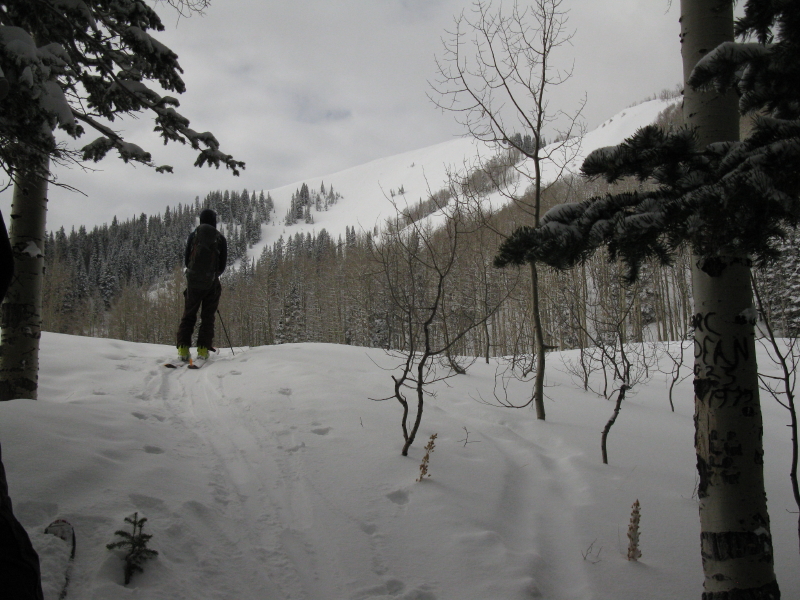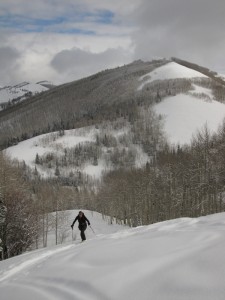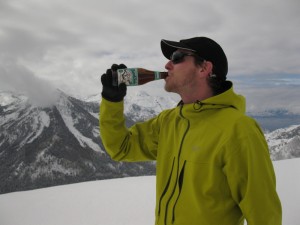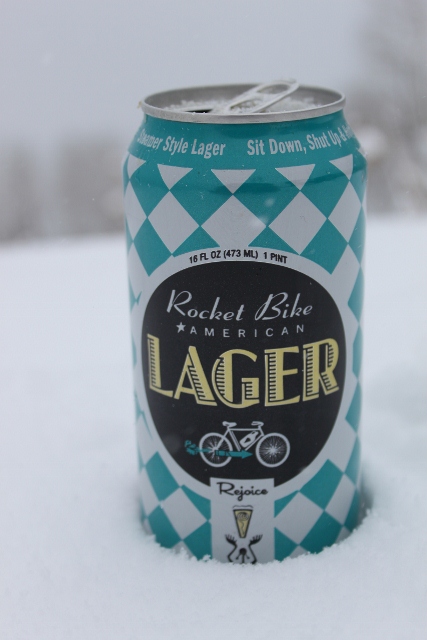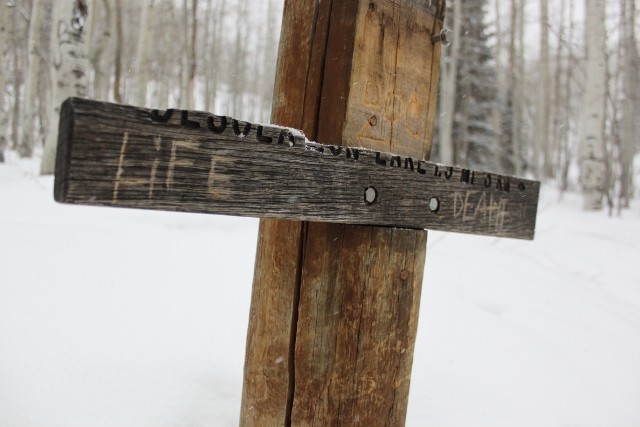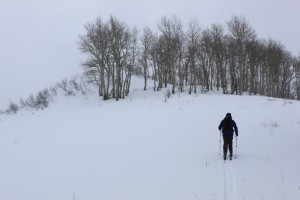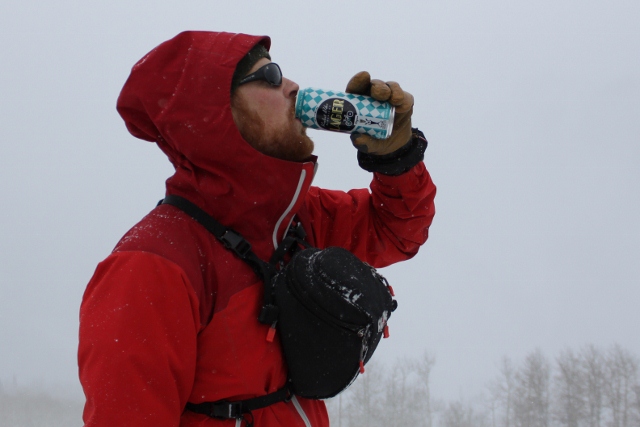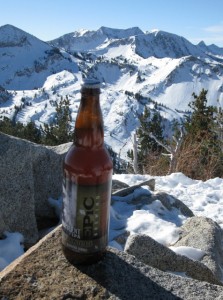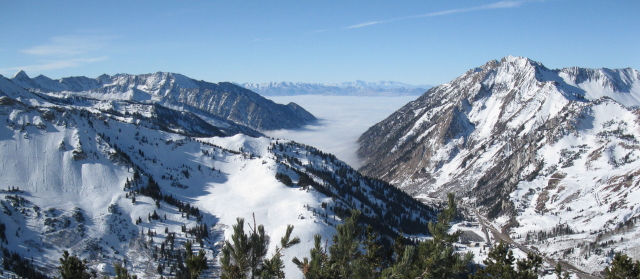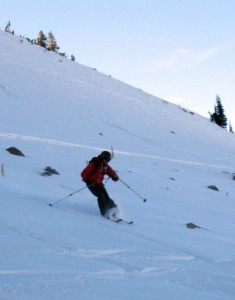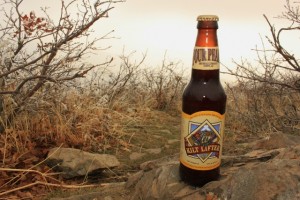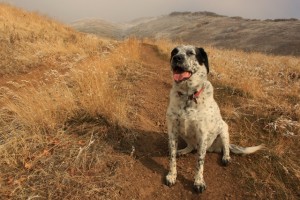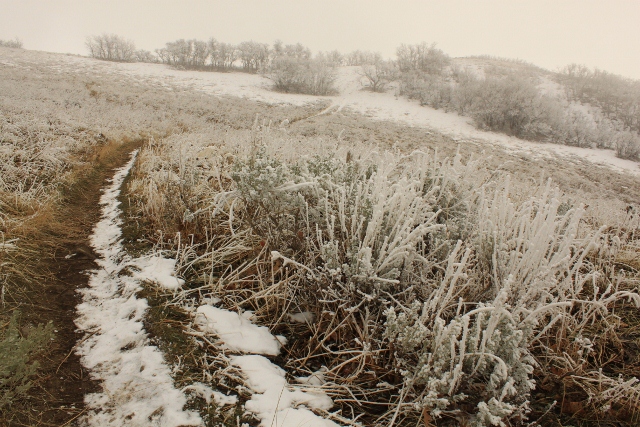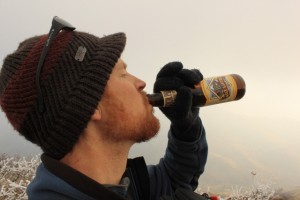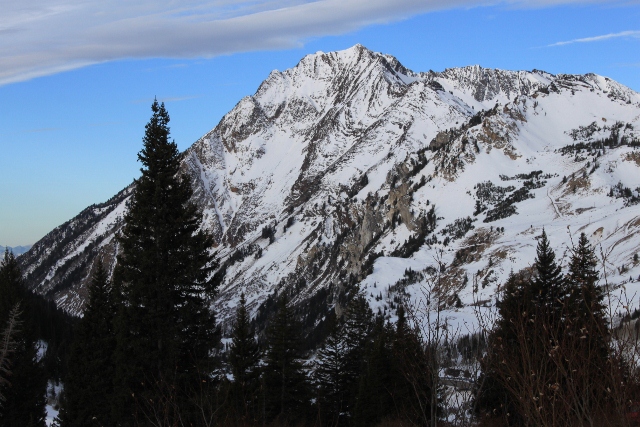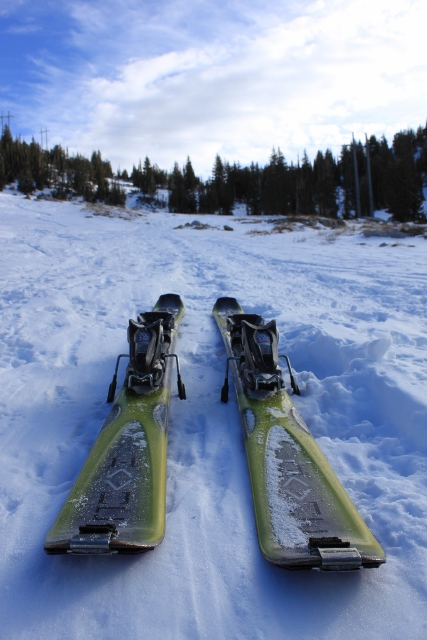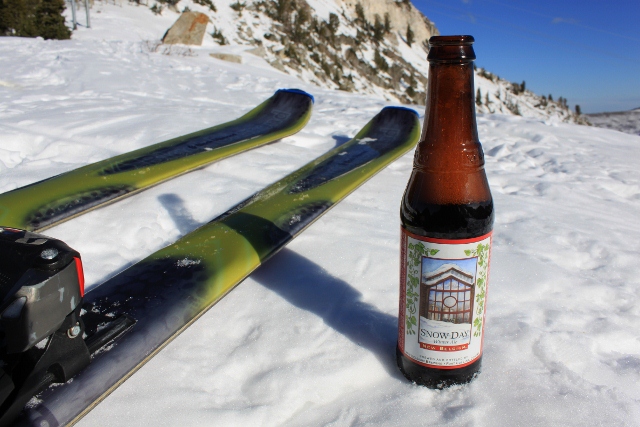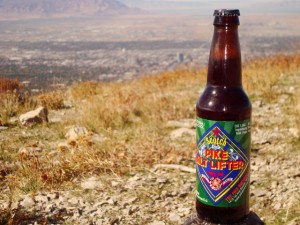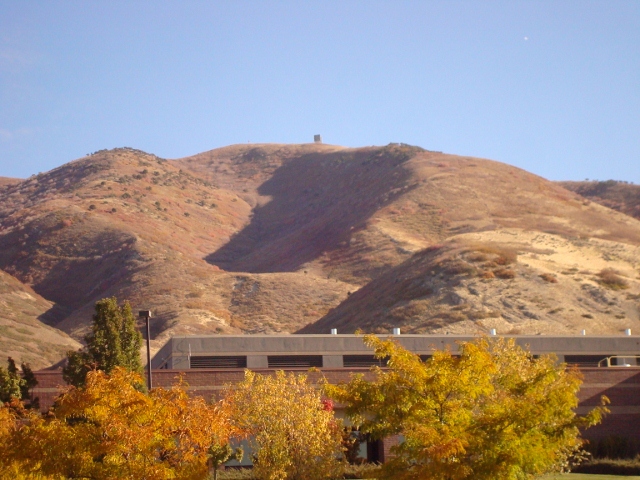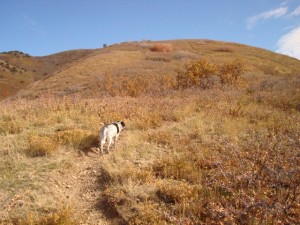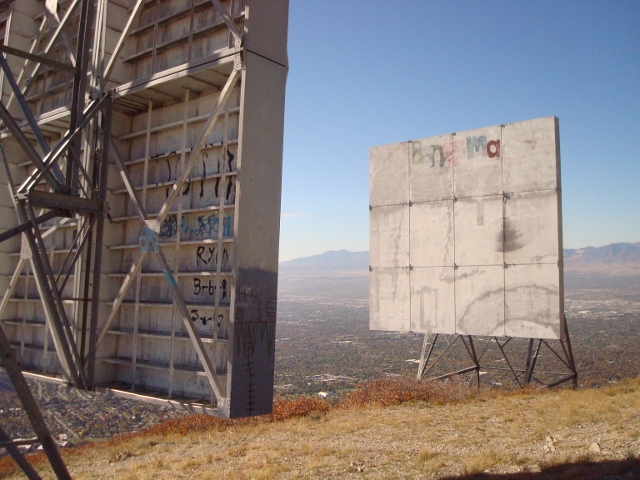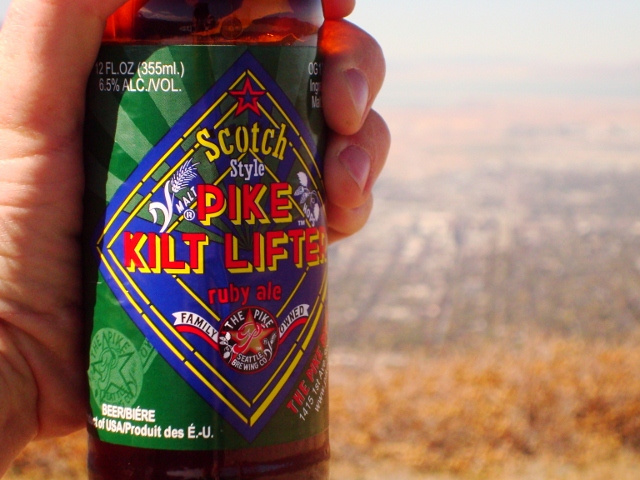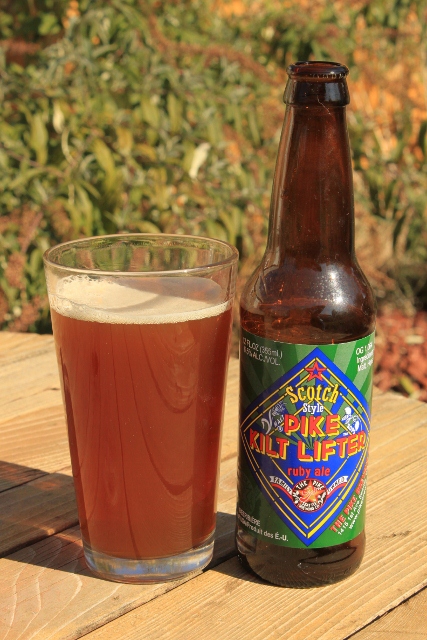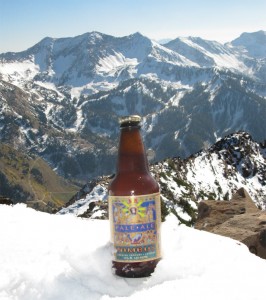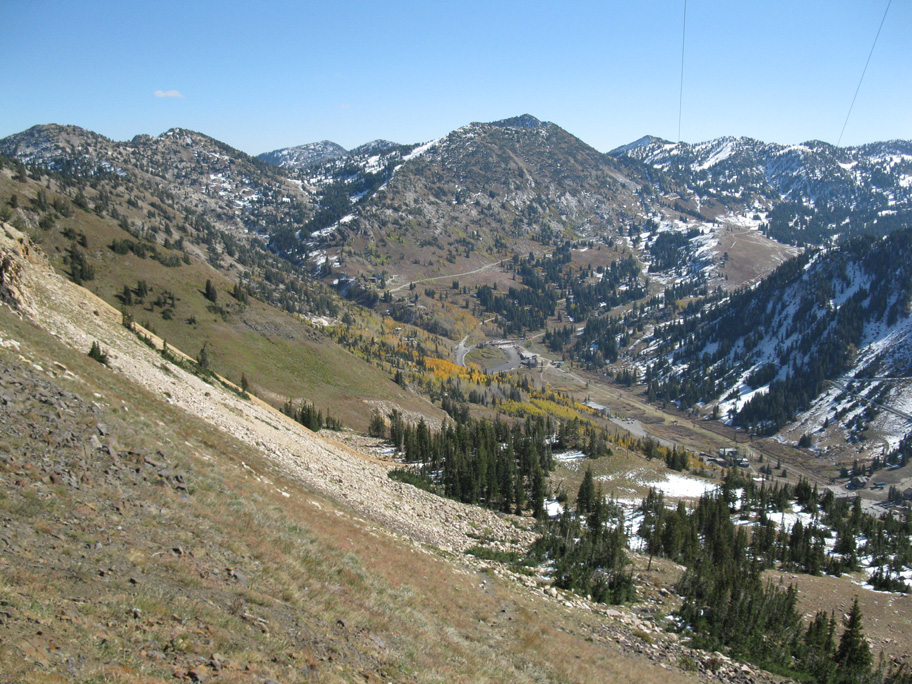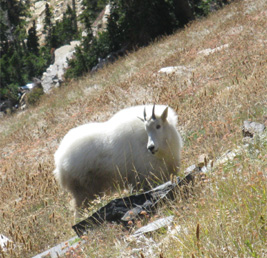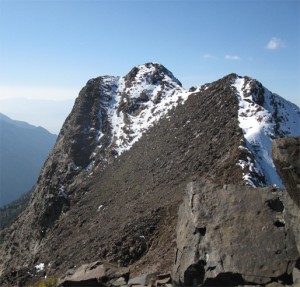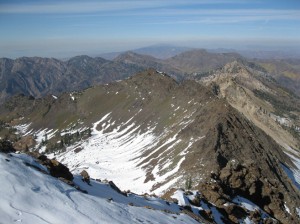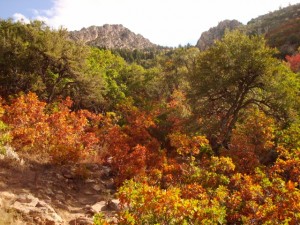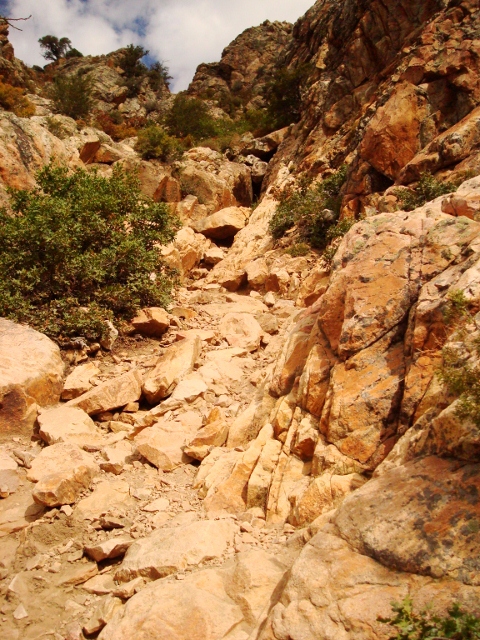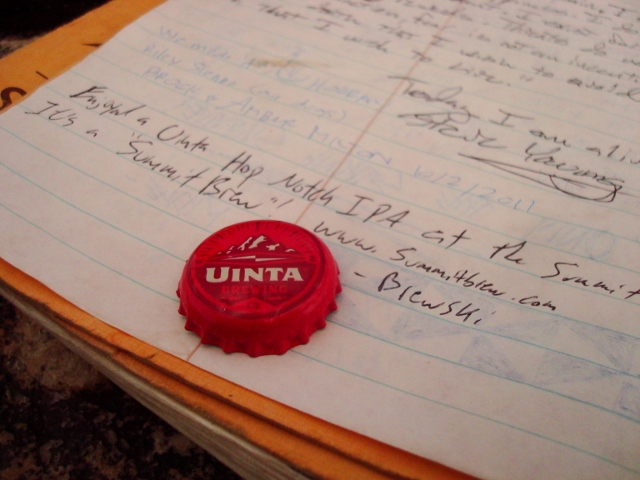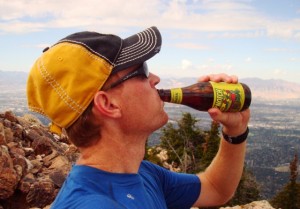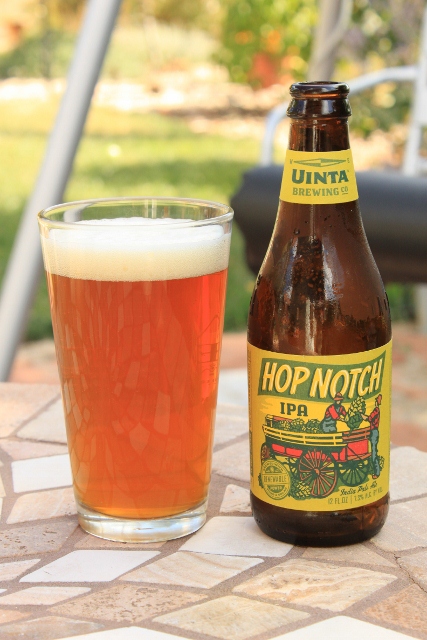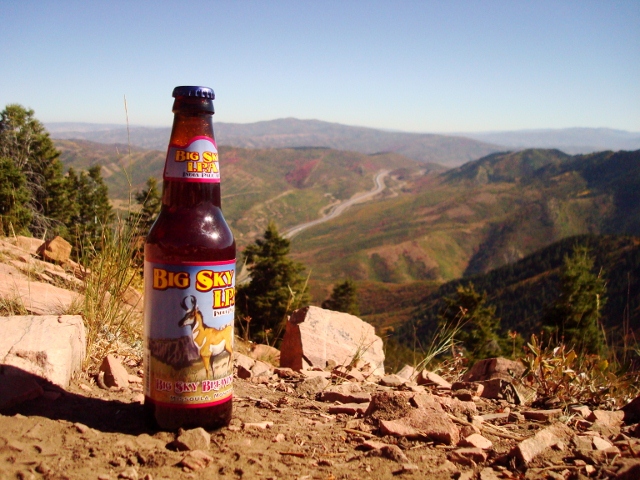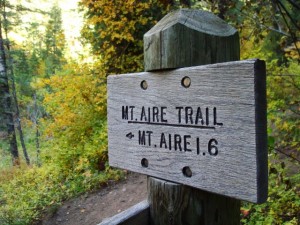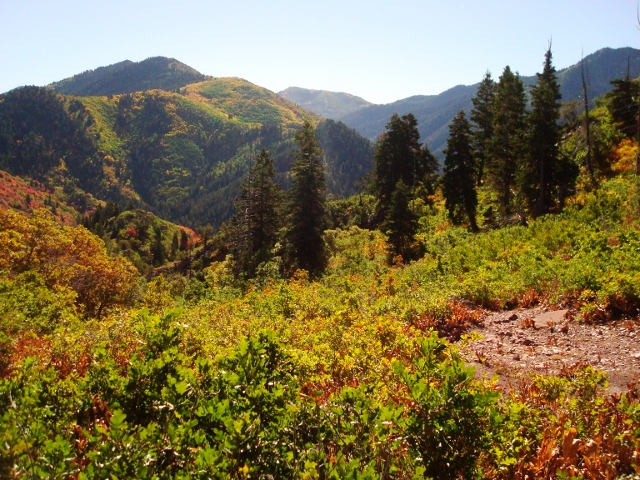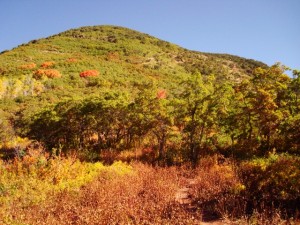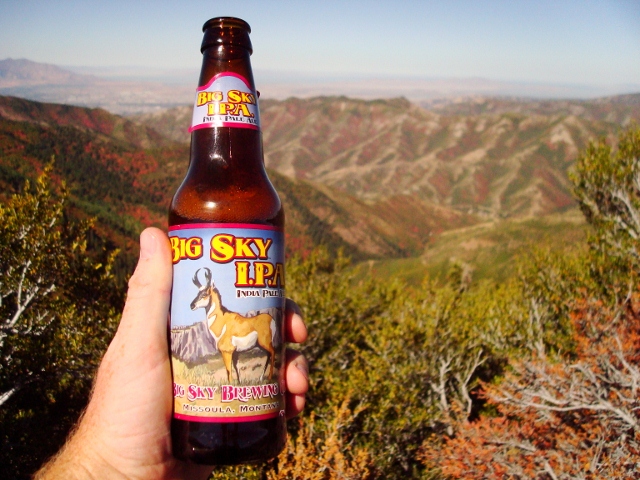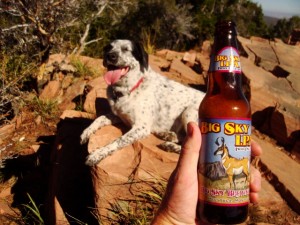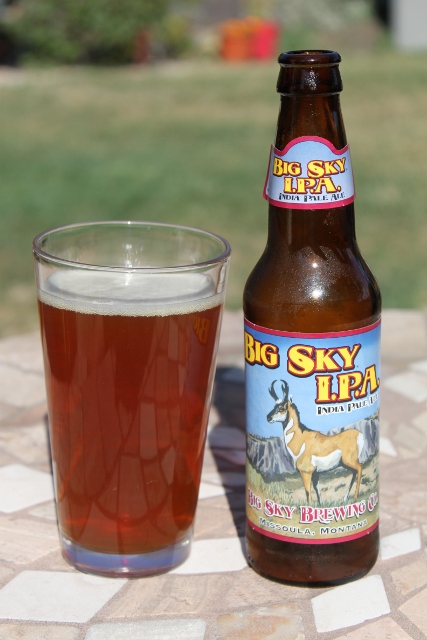Little Water Peak is a 9,605-foot mountain that lives between Mill Creek and Big Cottonwood Canyons in Utah’s Wasatch Mountains. While this tree freckled, rounded mound isn’t the most grand looking peak in the world, it makes up for its shortcomings with a bit more difficult access, stellar views, and great backcountry skiing in the winter. Of course any peak, dramatically huge or diminutive, is deserving of a Summit Brew, and so we gave this nondescript hill something crazy, with a Crazy Mountain Amber Ale.
Like many ski touring parties out for a long tour in Mill D North Fork, we ascended Little Water for the peak-bagging experience, and to ski down her somewhat benign southeastern face (prudent to to the considerable avalanche danger that day.)
We began by parking and gearing up in the Spruces Campground and walking across the Big Cottonwood Canyon highway to the Mill D trailhead. In the winter months, this is the more popular way to get to Little Water, but in the summer access from Dog Lake via Big Water Gulch in Mill Creek is the way to go.
We skinned up and skied the trail that winds through summer cabins and up Mill D until it split to the left enroute to Dog Lake. We made quick work of it and first ascended Reynolds Peak where Brewddah enjoyed a Summit Brew of his own. Across the valley to the north, we could see Little Water Peak, just begging to be ascended as well. So we made haste, skied soft snow into Butler Fork, made another lap into Big Water Gulch, then began our ascent up Little Water Peak.
The skinning from there was simple enough as an old track ascended through the widely-spaced aspen trees. The climb was long, but provided views of Mill D, Big Water, Mill Creek Canyon, and Dog Lake as it lay frozen below. Soon after cresting tree line, we switchbacked over a rocky face on shallow snowpack, kick-turning around bushes poking up from the surface. This led us to a false summit that felt devastating as exhaustion from a full day on the snow and in the sun sapped our energy. This also meant I had to climb some more before cracking open the beer that had been calling to me since the start of the trip. Luckily, that fake peak wasn’t far from the true summit, and the skinning was mostly low angle and easy.
Once the summit of Little Water Peak was reached and we all had a bite to eat, I withdrew from my pack the aptly named Crazy Mountain Amber Ale from the Crazy Mountain Brewery in Edwards, Colorado and drank deep in celebration of an excellent backcountry ski day.
Crazy Mountain Amber Ale
I love discovering new breweries in the Mountain West, so imagine my delight when my wife and I stumbled upon the Crazy Mountain Brewery while driving through Edwards, Colorado. This little brewery is tucked under an industrial building just off I-70, and featured a funky tap room and canning line in the back. After tasting some samples, I asked for a sixer of their excellent Amber Ale. As chance would have it, they were canning the amber that morning and pulled a newborn right off the line.

Crazy Mountain Amber Ale is a rare beer that tastes better in the can, especially from atop mountain summits.
Beer as fresh as this has to taste good, and boy does it. While Crazy Mountain is an amber ale by name, the hop head in me delights at the floral qualities of this beer that hit you right off the bat. It’s a very hoppy beer and reminds me of the Big Cottonwood Amber Ale from Squatters, which also features a hoppy, but not bitter, character. But while hops prevail and make the Crazy Mountain not “true to style” for an amber, the malt foundation does keep everything balanced and in check.
In the glass, it didn’t have much head or lacing, but went down smooth and easy. I find a lot of amber ales to be so malty that they’re not very “sessionable,” but Crazy Mountain’s amber is clean and refreshing while still imparting all the qualities you’d expect from the style.
Weeks before the ascent of Little Water Peak, I shared one with a friend while tailgating after a ski day. Upon pulling the can from the cooler, he exlaimed, “that’s one dank-ass looking beer!” Sure, the can makes it look like a dank hippy brew, but this is one beer that is anything but. In fact, Crazy Mountain Amber Ale is the rare beer that I think tastes better in the can than in a glass, making it the ideal brew to stocking the cooler with for a day’s adventure.
Crazy Mountain Amber Ale comes in 6-pack cans and is 5.2% ABV with an IBU of 25. For more, visit the brewery at www.crazymountainbrewery.com

